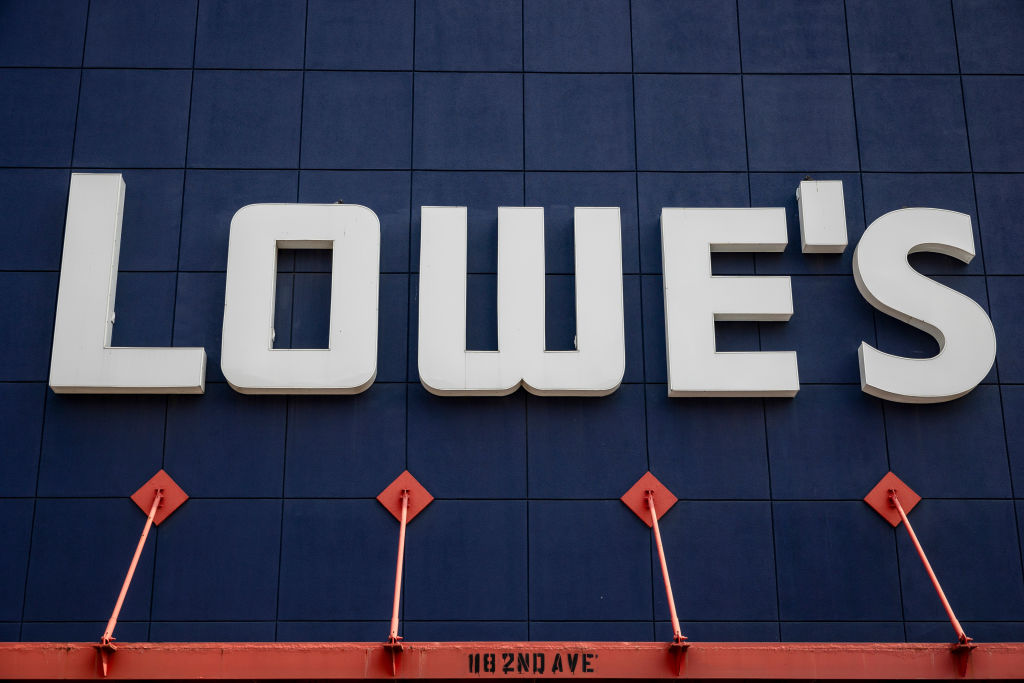Is Lowe's Stock Still a Buy After Earnings?
Lowe's stock is lower Tuesday after the retailer's Q2 revenue miss and downwardly revised outlook. Should investors be worried?


Lowe's (LOW) stock is struggling for direction Tuesday after the home improvement retailer reported second-quarter results that were mixed compared with analysts' expectations and slashed its full-year outlook.
In the three months ended August 2, Lowe's said its revenue decreased 5.6% year-over-year to $23.6 billion, pressured by a 5.1% decline in comparable-store sales, also known as same-store sales. Its earnings per share (EPS) were down 10.1% from the year-ago period to $4.10.
"The company delivered strong operating performance and improved customer service despite a challenging macroeconomic backdrop, especially for the homeowner," said Lowe's CEO Marvin Ellison in a statement. "At the same time, we continue to build momentum with our Total Home strategy reflected by our mid-single-digit positive comparisons with the Pro customer this quarter."
From just $107.88 $24.99 for Kiplinger Personal Finance
Become a smarter, better informed investor. Subscribe from just $107.88 $24.99, plus get up to 4 Special Issues

Sign up for Kiplinger’s Free Newsletters
Profit and prosper with the best of expert advice on investing, taxes, retirement, personal finance and more - straight to your e-mail.
Profit and prosper with the best of expert advice - straight to your e-mail.
The results were mixed compared with what analysts were anticipating. Specifically, Wall Street targeted revenue of $23.9 billion and earnings of $3.97 per share for Lowe's Q2, according to Yahoo Finance.
Lowe's also updated its full-year outlook "based on lower-than-expected DIY sales and a pressured macroeconomic environment." Here's what it now expects for its fiscal year:
| Metric | New outlook | Previous outlook |
|---|---|---|
| Revenue | $82.7 billion to $83.2 billion | $84 billion to $85 billion |
| Comparable-store sales | (3.5%) to (4%) | (2%) to (3%) |
| EPS | $11.70 to $11.90 | $12 to $12.30 |
"As we look ahead, we are confident that we are making the right long-term investments to take share when the market recovers," Ellison said.
Is Lowe's stock a buy, sell or hold?
Lowe's has lagged the broader market so far this year, up 11% on a total return basis (price change plus dividends) vs the S&P 500's nearly 19% gain. Yet Wall Street remains bullish on the consumer discretionary stock.
Indeed, of the 35 analysts covering LOW tracked by S&P Global Market Intelligence, 12 say it's a Strong Buy, four have it at Buy, 17 say it's a Hold and two call it a Sell or Strong Sell. This works out to a consensus recommendation of Buy.
Speaking for the bulls is financial services firm BofA Securities, which has a Buy rating and $280 price target on Lowe's stock.
"LOW is capitalizing on investments it has made to better service the small and medium-sized pro and gain share, including its pro rewards program, pro inventory (bringing back brands it had lost), and piloting some solutions for larger order job site delivery," wrote BofA Securities analyst Robert Ohmes in a June 4 note. "While share gains should support this segment, LOW's pro growth vs the industry is also supported by the relative resilience of the small to medium-sized pro, which can more easily shift from a remodel occasion to a repair occasion."
What's more, Lowe's is one of the top dividend growth stocks, having raised its payout for 50 straight years. Why does dividend growth matter?
"Shares in companies that raise their payouts like clockwork decade after decade can produce superior total returns (price change plus dividends) over the long run, even if they sport apparently ho-hum yields to begin with," writes Dan Burrows, senior investing editor at Kiplinger.com, in his feature "Best Dividend Stocks to Buy for Dependable Dividend Growth." To be sure, without calculating in Lowe's 1.9% dividend yield, the stock's year-to-date return would be closer to 8%.
Burrows adds that increases in shareholder-friendly initiatives such as dividends also offer peace of mind. "After all, any company that manages to raise its dividend year after year – through recession, war, market crashes and more – is demonstrating both its financial resilience and its commitment to returning cash to shareholders," he writes.
Related Content
Profit and prosper with the best of Kiplinger's advice on investing, taxes, retirement, personal finance and much more. Delivered daily. Enter your email in the box and click Sign Me Up.

Joey Solitro is a freelance financial journalist at Kiplinger with more than a decade of experience. A longtime equity analyst, Joey has covered a range of industries for media outlets including The Motley Fool, Seeking Alpha, Market Realist, and TipRanks. Joey holds a bachelor's degree in business administration.
-
 I'm want to give my 3 grandkids $5K each for Christmas.
I'm want to give my 3 grandkids $5K each for Christmas.You're comfortably retired and want to give your grandkids a big Christmas check, but their parents are worried they might spend it all. We ask the pros for help.
-
 If You're Not Doing Roth Conversions, You Need to Read This
If You're Not Doing Roth Conversions, You Need to Read ThisRoth conversions and other Roth strategies can be complex, but don't dismiss these tax planning tools outright. They could really work for you and your heirs.
-
 Could Traditional Retirement Expectations Be Killing Us?
Could Traditional Retirement Expectations Be Killing Us?A retirement psychologist makes the case: A fulfilling retirement begins with a blueprint for living, rather than simply the accumulation of a large nest egg.
-
 I'm a Financial Planner: If You're Not Doing Roth Conversions, You Need to Read This
I'm a Financial Planner: If You're Not Doing Roth Conversions, You Need to Read ThisRoth conversions and other Roth strategies can be complex, but don't dismiss these tax planning tools outright. They could really work for you and your heirs.
-
 Could Traditional Retirement Expectations Be Killing Us? A Retirement Psychologist Makes the Case
Could Traditional Retirement Expectations Be Killing Us? A Retirement Psychologist Makes the CaseA retirement psychologist makes the case: A fulfilling retirement begins with a blueprint for living, rather than simply the accumulation of a large nest egg.
-
 I'm a Financial Adviser: This Is How You Can Adapt to Social Security Uncertainty
I'm a Financial Adviser: This Is How You Can Adapt to Social Security UncertaintyRather than letting the unknowns make you anxious, focus on building a flexible income strategy that can adapt to possible future Social Security changes.
-
 I'm a Financial Planner for Millionaires: Here's How to Give Your Kids Cash Gifts Without Triggering IRS Paperwork
I'm a Financial Planner for Millionaires: Here's How to Give Your Kids Cash Gifts Without Triggering IRS PaperworkMost people can gift large sums without paying tax or filing a return, especially by structuring gifts across two tax years or splitting gifts with a spouse.
-
 'Boomer Candy' Investments Might Seem Sweet, But They Can Have a Sour Aftertaste
'Boomer Candy' Investments Might Seem Sweet, But They Can Have a Sour AftertasteProducts such as index annuities, structured notes and buffered ETFs might seem appealing, but sometimes they can rob you of flexibility and trap your capital.
-
 AI Stocks Lead Nasdaq's 398-Point Nosedive: Stock Market Today
AI Stocks Lead Nasdaq's 398-Point Nosedive: Stock Market TodayThe major stock market indexes do not yet reflect the bullish tendencies of sector rotation and broadening participation.
-
 Got $100 to Gamble? These Penny Stocks Could Be Worth the Ride
Got $100 to Gamble? These Penny Stocks Could Be Worth the RideVolatile penny stocks are high-risk plays with potentially high rewards. If you have $100 you can afford to lose, these three names are worth a look.
-
 Quick Question: Are You Planning for a 20-Year Retirement or a 30-Year Retirement?
Quick Question: Are You Planning for a 20-Year Retirement or a 30-Year Retirement?You probably should be planning for a much longer retirement than you are. To avoid running out of retirement savings, you really need to make a plan.